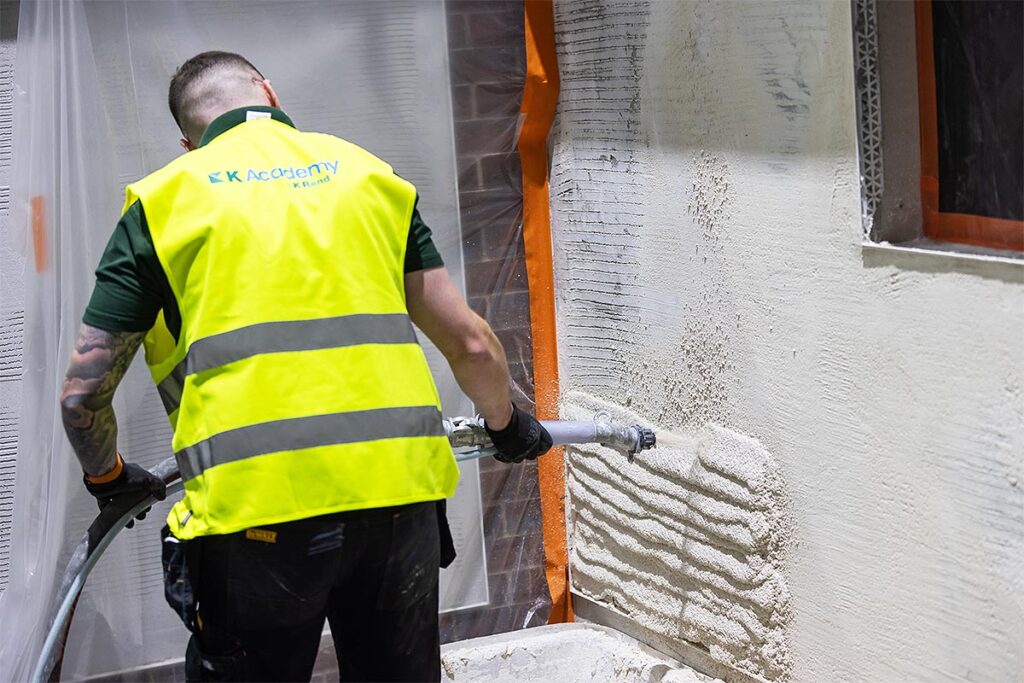In an industry where product substitution often compromises building performance and increases costs throughout a building’s lifecycle, manufacturers can play an important role in protecting specifications to ensure a building’s performance remains as designed. David Grace, Sales Director of K Rend, explores the importance of architectural specifications and why product performance and value over time is a critical factor for housebuilders.
Product substitution is a common issue in the construction industry, often resulting in the application of value engineered products which don’t have the same benefits. For example, thinner specifications can lead to poor longevity undermining a building’s performance, and in the longer term affecting its lifecycle costs. Substitution may also invalidate contract conditions and, in the worst-case, expose people to significant liabilities in the event of product failure. Ultimately, it disrupts the specifier’s vision and design intent, leading to a mismatch between the intended design and the final built outcome.
RENDER CHOICE
A fundamental component of building envelopes, render plays a pivotal role in the overall performance and aesthetics of a structure
One area that can be particularly vulnerable to such issues is the choice of render. A fundamental component of building envelopes, render plays a pivotal role in the overall performance and aesthetics of a structure. However, improper specification or application of render can lead to a cascade of issues that haunt projects for years to come. From poor finishes to premature deterioration, these problems not only compromise a building’s integrity but also incur significant remedial costs down the line.
While a value engineered solution may seem like an attractive option upfront, the long-term implications can be devastating, impacting the durability, longevity and quality of finish. Failure to adhere to the manufacturer’s technical specification and application guidelines can also result in certification being invalid, leaving the project vulnerable and the housebuilder liable. Moreover, remedial work to address issues like cracking, delamination, or an uneven finish can far outweigh any initial savings. For example, failure to use mesh around window and door openings can result in cracking or delamination.
THE ROLE OF THE MANUFACTURER
Forward-thinking manufacturers like K Rend have recognised the critical importance of safeguarding architectural specifications. By providing comprehensive support and resources to specifiers and applicators at every stage of the project, it aims to ensure the correct product is used and applied as per the application instructions, safeguarding the integrity of the design. This multifaceted approach includes providing detailed technical specifications, clear application guidelines, and on-site assistance from a team of application specialists and R&D experts. Their vision is clear – to enable the most appropriate choices and practices to deliver a first-class experience for everyone in the project chain, from specifier to property homeowner.
CLOSING THE SKILLS GAP
To address the skills gap in the industry, some manufacturers have also launched training programs to equip applicators with the knowledge and skills to execute render systems flawlessly for both hand and machine methods. For instance, K Rend’s comprehensive training programmes, delivered through their purpose-built K Academy, empower applicators to master the application of its diverse range of high-performance render products, from base coats to through coloured renders and different texture finishes such as scraped texture, thin coats, roughcast and dash. These high level training courses ensure adherence to best practices, enabling the delivery of exceptional, long-lasting results that protect architectural specifications. It’s a simple purpose to deliver a very achievable goal.

Additionally, recommended applicator programs offer housebuilders a roster of recommended applicators who have been trained in the correct application of the manufacturer’s products, providing peace of mind that the render will be applied to the highest standards.
Manufacturers are also recognising the value of material selection, with some offering innovative solutions like silicone-based renders. These products not only enhance the aesthetic appeal of the facade but also contribute to the building’s overall durability and breathability, providing superior water repellency and a longer-lasting, fresher appearance.
Further addressing the skills gap, manufacturers like K Rend recognise the importance of ease of use. An extensive R & D team made up of a mix of PhD research scientists and applicators with a history of on-the-tools site work enables the development of new formulations which are easier and quicker to apply. As render specialists, they have a wide portfolio of products which enables the housebuilder and applicator to choose the right product for each project depending on project size, substrate and preferred application method.
In an era of ever-increasing pressure to deliver cost-effective, high-performing buildings, the importance of render specification cannot be overstated. By partnering with manufacturers who prioritise product quality, technical support, and applicator training, architects and contractors can ensure that their designs are realised to the highest standards, safeguarding both the building’s performance and their own reputation. Correct render specification is the foundation upon which enduring, sustainable buildings are built. For more information about the wide range of render systems available from K Rend or for technical guidance, visit